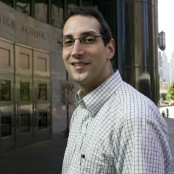Kalimah Allah: Sedalam Mana Sensitiviti & Keprihatinan Politik Kita?
Oleh Amidi Abd Manan (Presiden ABIM)
Oleh Amidi Abd Manan (Presiden ABIM)
Pernyataan kedatangan agama Kristian beraliran Nestorian ke rantau ini di blog 1Malaysia Datuk Seri Najib, mengundang beberapa persoalan. Apakah tujuan pernyataan tersebut? Adakah ia bertujuan ingin menyatakan bahawa kehadiran agama Kristian adalah seusia dengan kedatangan Islam atau lebih awal lagi?
Adakah pernyataan ini ingin mengangkat fungsi dan watak agama Kristian yang mewarnai rantau ini dalam merubah masyarakat? Atau adakah ia sekadar pernyataan politik yang bertujuan menyantuni pengundi Kristian?
Pernyataan sumbangan Kristian terhadap pembangunan rantau ini perlu dibuat dengan berhati-hati apatah lagi apabila merujuk ke abad yang ke-7. Ia boleh mendatangkan kekeliruan tehadap latar belakang pembentukan budaya dan peradaban di rantau ini.
Menurut Tan Sri Prof Dr Syed Muhammad Naquib al-Attas, Islam telah memainkan peranan yang jauh lebih signifikan dalam pembentukan budaya dan peradaban di rantau ini. Ia telah membebaskan dan membentuk weltanschauung atau pandangan sarwa masyarakat di sini.
Pengaruh Islam telah jauh meresap ke dalam urat nadi umat manusia di sini yang terpancar dalam pemikiran, budaya, kesusasteraan dan peraturan hidup.
Kedatangan Islam telah merungkai pengaruh Hindu-Buddha dalam peradaban masyarakat di Nusantara. Prof. Dr Syed Muhammad Naquib al-Attas menegaskan bahawa kehadiran Hindu-Buddha gagal merubah pandangan hidup masyarakat dan seterusnya tidak mampu menghasilkan satu kelainan yang memerdekakan masyarakat daripada fahaman animisme yang telah bertapak terlebih dahulu.
Dari pernyataan ini juga ia turut menatijahkan bahawa kedatangan Kristian juga gagal membentuk dan memberikan pengaruh yang bermakna terhadap kebudayaan dan peradaban masyarakat di sini. Tambahan pula Kristian aliran Nestorian yang merupakan aliran minoriti yang bermula di sekitar abad yang ke lima di Parsi.
Aliran ini mempercayai bahawa Isa (Jesus) merupakan anak angkat tuhan yang bertentangan dengan kepercayaan majoriti penganut Kristian yang menyatakan bahawa Jesus adalah anak tuhan dan bersatu dalam satu jasad. Ajaran Nestorian ini akhirnya terpencil dan semakin mengecil walau pun ada usaha untuk mengembangkannya sehingga ke tanah besar China.
Penyebaran Islam di rantau ini telah dilaksanakan dengan begitu teliti dan berhati-hati oleh para pendakwah Islam. Warna Hindu-Buddha yang begitu pekat perlu dicairkan dan diganti dengan warna Islam yang indah. Ketelitian itu turut melibat persoalan bahasa.
Bahasa memberikan makna dan seterusnya membentuk persepsi yang dikehendaki dan menanam keyakinan yang hakiki. Justeru itu menurut Prof. Syed Muhammad Naquib al-Attas, penyebaran agama Islam di rantau ini menggunakan bahasa Melayu dan bukan bahasa Jawa. Ini kerana bahasa Jawa telah diresapi oleh pengaruh Hindu-Buddha yang begitu pekat.
Para pendakwah ketika itu tidak menggunakan perkataan 'brahma' bagi merujuk tuhan yang esa sebagaimana yang digunakan oleh agama Hindu. Ini kerana konsep ketuhanan yang berbeza yang hendak disampaikan kepada mad'u. Tidak menyamakan 'dewa/deva' dengan malaikat juga kerana sebab yang sama.
Justeru kalimah 'Allah' yang digunakan oleh masyarakat di sini adalah unik dan khusus kepada konsep ketuhanan yang diperakui oleh Islam sahaja. Maka perkongsian perkataan adalah satu usaha yang berlawanan dengan budaya masyarakat di sini. Tambahan pula tiada hujah ilmiah yang menunjukkan perkongsian itu perlu diwajarkan. Hanya dakwaan ia telah digunakan berabad lamanya di tanah Arab bukan satu hujah yang kukuh.
Ini kerana kalimah Allah tidak digunakan dalam Bible versi asli yang diturunkan dalam bahasa Ibrani atau Hebrew (bahasa kaum Yahudi). Perkataan 'helluvah' atau Elohim digunakan bagi merujuk tuhan dalam bahasa tersebut. Apatah lagi versi bahasa Inggeris yang menggunakan 'god' bagi rujukan yang serupa.
Jadi apakah hujah yang wajar bagi perkataan Allah digunakan dalam Bible versi bahasa Melayu melainkan hujah penyebaran agama Kristian kepada masyarakat Melayu?
Jika alasan ia telah digunakan selama lebih 50 tahun di Sabah dan Sarawak ia adalah alasan yang terbit dari satu kesalahan situasi yang lahir dari kefahaman yang salah. Adakah kesalahan ini mahu dibiarkan atau perlu kepada pembetulan?
Bukan kerana takut berkongsi istilah yang sama. Jika kita lihat perkembangan agama Islam di Sabah dan Sarawak dalam masa 50 tahun ini, ia telah menunjukkan pertambahan yang ketara. Islam telah berkembang sehingga ke pedalaman dan terus berkembang dari semasa ke semasa.
Penghayatan Islam sudah semakin baik dengan pertambahan institusi pendidikan Islam dan disambut baik oleh masyarakat. Mereka yang berhujah kekhuatiran ini memberikan gambaran bahawa Islam ini kerdil juga telah tersilap.
Penegasan Allah dalam surah al-Ikhlas, yang dengan jelas menekankan 'Allah' adalah tidak beranak dan tidak diperanakkan memberikan isyarat bahawa istilah 'Allah' jangan dipermudahkan.
Oleh itu gesaan Setiausaha Agung DAP, Yb Lim Guan Eng yang mahukan agar perkataan 'Allah' boleh digunakan oleh masyarakat Kristian dalam Bible versi Melayu jelas menunjukkan kejahilan beliau dalam persoalan ini. Ia hanya satu isu politik yang cuba ditonjolkan.
Polemik kalimah 'Allah' antara penganut Islam dan Kristian di Malaysia mesti dihentikan segera dengan menghormati waq'iy atau latar sejarah dan budaya masyarakat setempat.
Penegasan perasaan kesal yang mendalam terhadap ahli politik negara ini apabila isu kalimah 'Allah' ini digunakan untuk meraih sokongan sehingga menggadaikan maruah agama Islam dan memperjudikan keharmonian hubungan antara agama.
Pertubuhan dakwah di negara ini mahukan ketegasan yang ikhlas dalam memelihara agama khususnya agama Islam.

